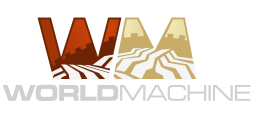
Overview
We’re thrilled to introduce World Machine 4046, the final release of ‘Hurricane Ridge’! Hurricane Ridge brings game-changing performance improvements, streamlined workflow, and powerful new terrain tools to create with.
This version is available to all users with maintenance valid through at least Jan 1, 2023.
Performance Enhancements
‘Hurricane Ridge’ offers significant boosts to both build and display performance, especially when working with terrains at 8k resolution and above.
- Blazing Fast Devices: Key devices like Erosion are more than 50 times faster at high resolutions. This staggering improvement makes high resolution terrains easier to create than ever. Other mainstays like Perlin Noise, Create Water, etc see order-of-magnitude improvements.
- Optimized Memory Usage: A new memory system contributes to performance and ensures your machine runs smoothly while handling gigabytes of data for high-res builds.
- Improved Viewport Responsiveness: The display code has been optimized for a snappier, more responsive experience.
Here’s an example video of building a world at 8k resolution in Hurricane Ridge (on the right) versus the previous version (on the left).
Workflow Efficiency
We’ve overhauled the user interface to make your workflow more efficient.
- Right-Side Editing Pane: Easily modify device parameters without cluttering your workspace.
- Pinnable Dialogs: Floating parameter dialogs can be pinned or dismissed with a click outside them.
- Organized Panels: Scrollable, collapsible panels are used throughout for a cleaner workspace.
- New Display Guides: Utilize Slope Overlays and Terrain Grids for better visual aids during terrain design.
- Versioned Projects: Seamlessly round-trip prior edition files without compatibility issues. Upgrade devices to unlock new features.
- Quality-of-Life Improvements: Numerous small enhancements make your workflow smoother.
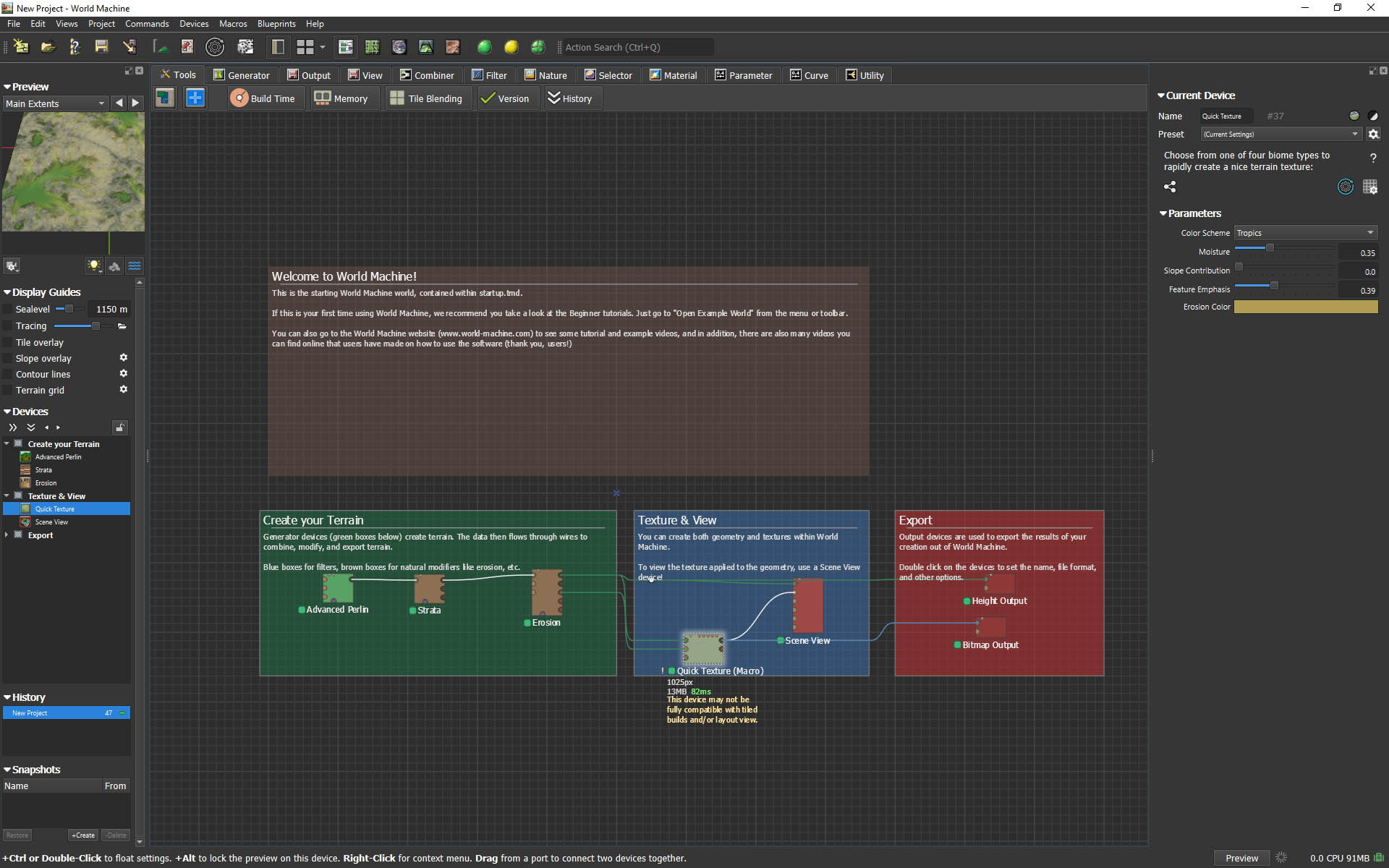
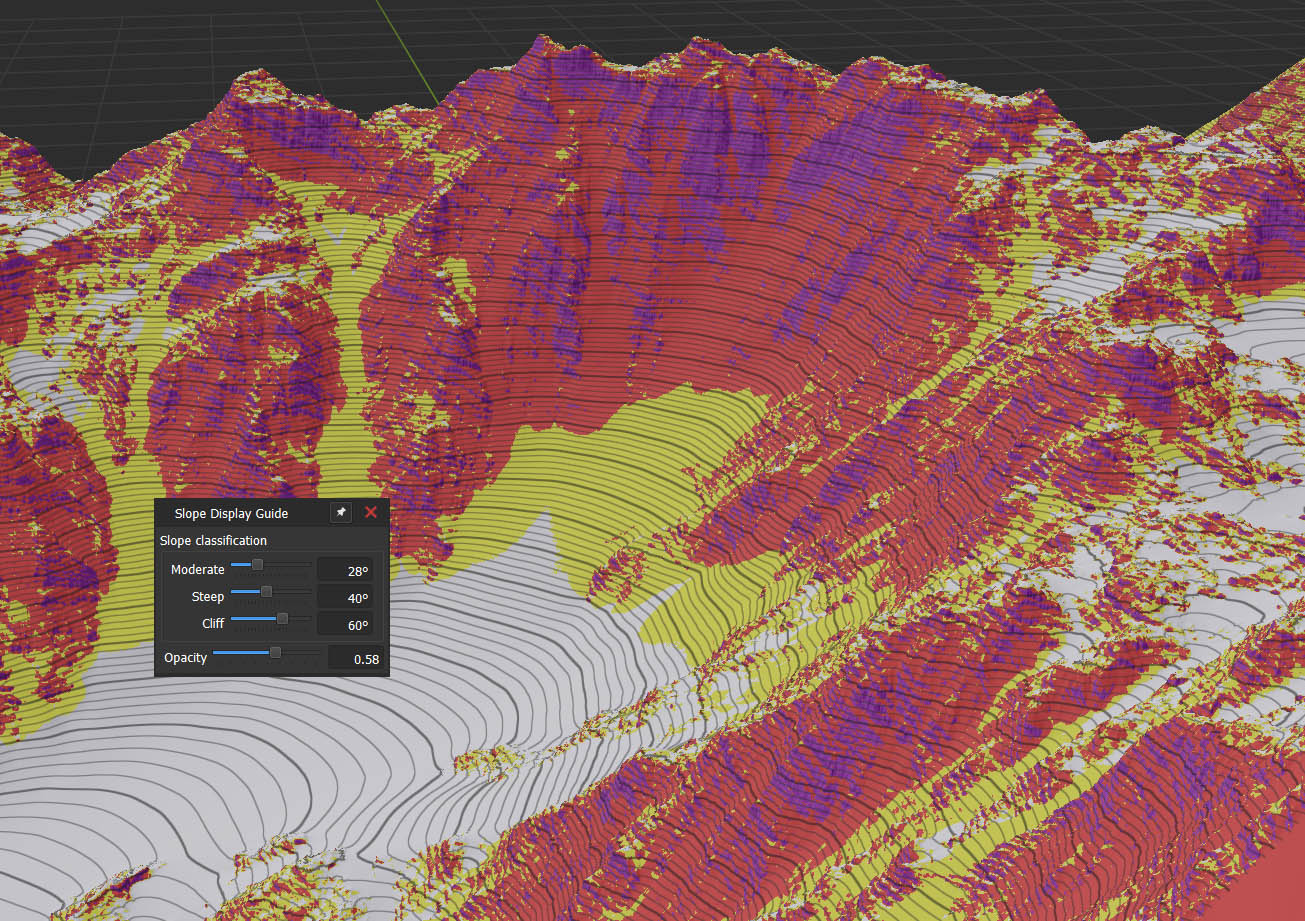
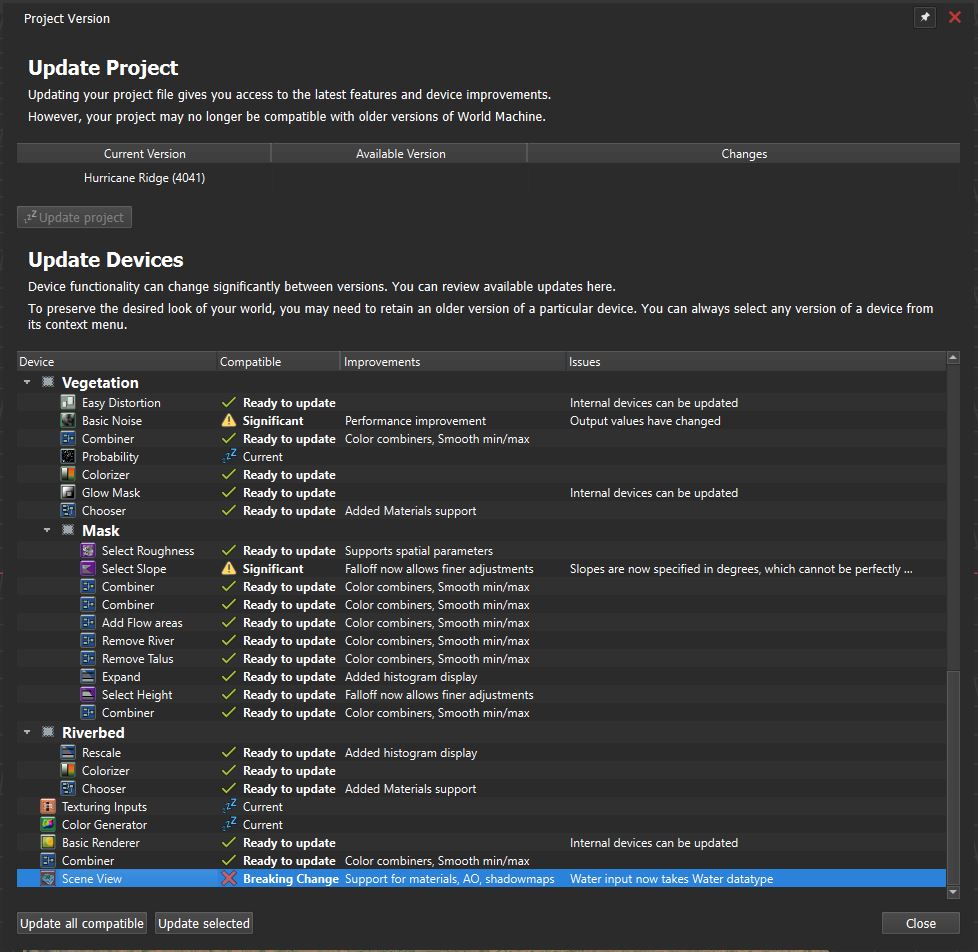
New Creative Tools
Unlock new creative possibilities with more than a dozen revised or added devices. Here are a few highlights:
New Erosion Model
While performance is the biggest star, the new Erosion model also tackles terrain forms previously out of reach, such as soil-mantled hills.
- Feature Size Control: Directly control the maximum affected feature size for precise results.
- Soil Control: Model the landform evolution of soil from an initial distribution.
- Re-tuned and spatial parameters: Every parameter can now be controlled by a map, giving you unparalleled tuning power and the ability to affect each area of the map uniquely. The interplay between them has been adjusted to be more intuitive.
- Repeatable output: Erosion output now 100% matches between builds, eliminating a common frustration.
- And many additional enhancements…
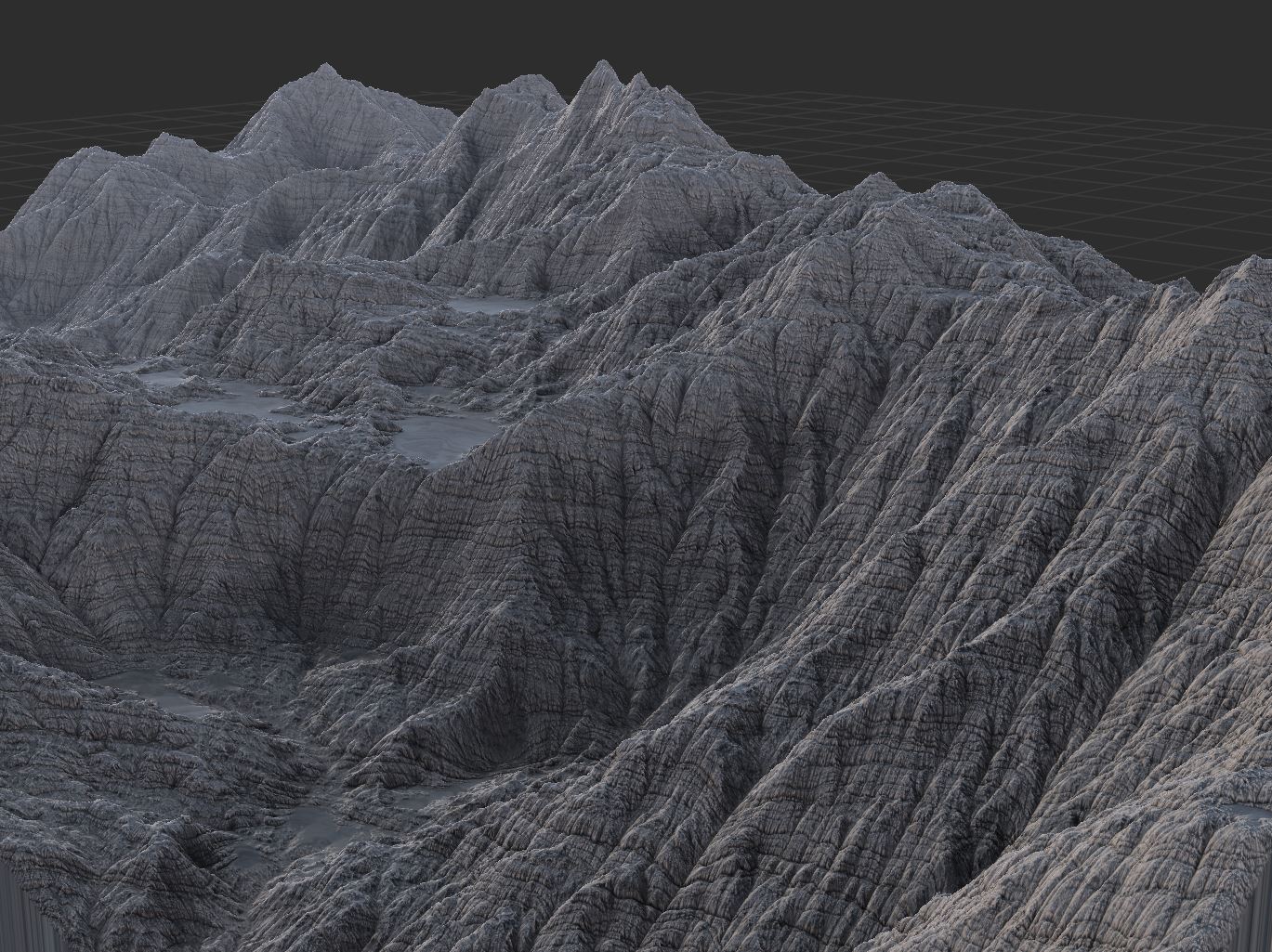
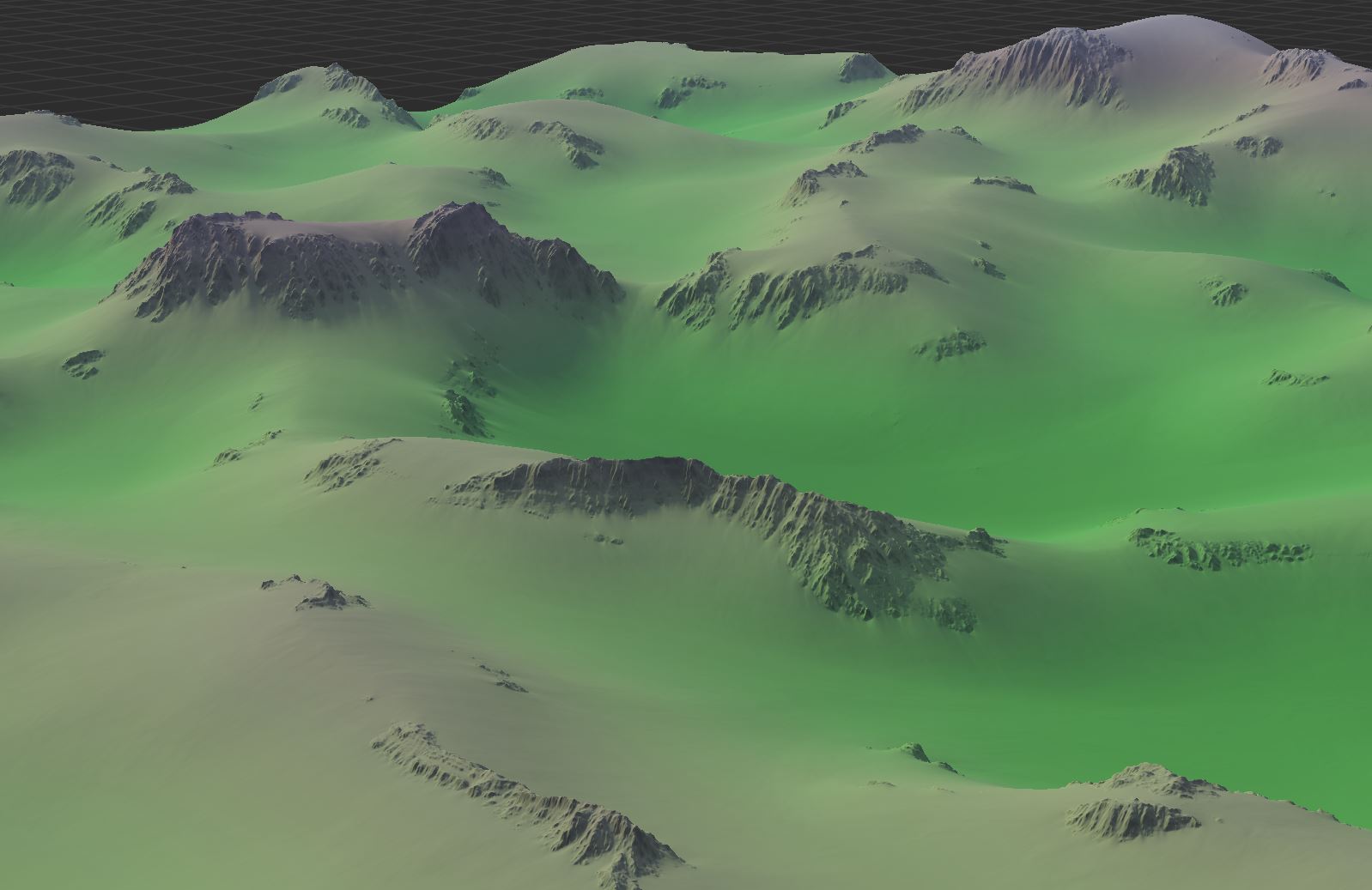
Thermal Weathering
Add greater authenticity to your terrain with a more powerful and realistic Thermal Weathering model that simulates the fracturing of exposed rock into talus.
- Stronger Influence: Talus deposition can now completely bury vulnerable ridgelines, enhancing the realism of weathered landscapes.
- Mass Balance Option: The return of this popular feature lets you control the relative balance of bedrock wear and talus deposition, giving you more control over terrain evolution.
- Spatial Parameters: Every parameter can now be controlled by a map, giving you unparalleled tuning power.
- Simulate Talus Movement: Switch to mass-movement-only mode to treat the entire input as granular material, simulating natural talus flow.
- Performance Boost: Enjoy faster build times.
Layout Shape Tool
The Shapes Editor has received a massive upgrade:
- Shape Grouping: Organize your shapes for easier management.
- Adjustable Falloff: Customize falloff to be any percentage between fully internal and fully external.
- Per-Vertex Height Controls: Set individual heights on polygon or rectangle vertices for complex shapes.
- Advanced Compositing Modes: New modes like Behind, Within Existing, and Intersect expand your creative options.
- Interpolating Surface Shape: A new shape type for sculpting smooth surfaces.
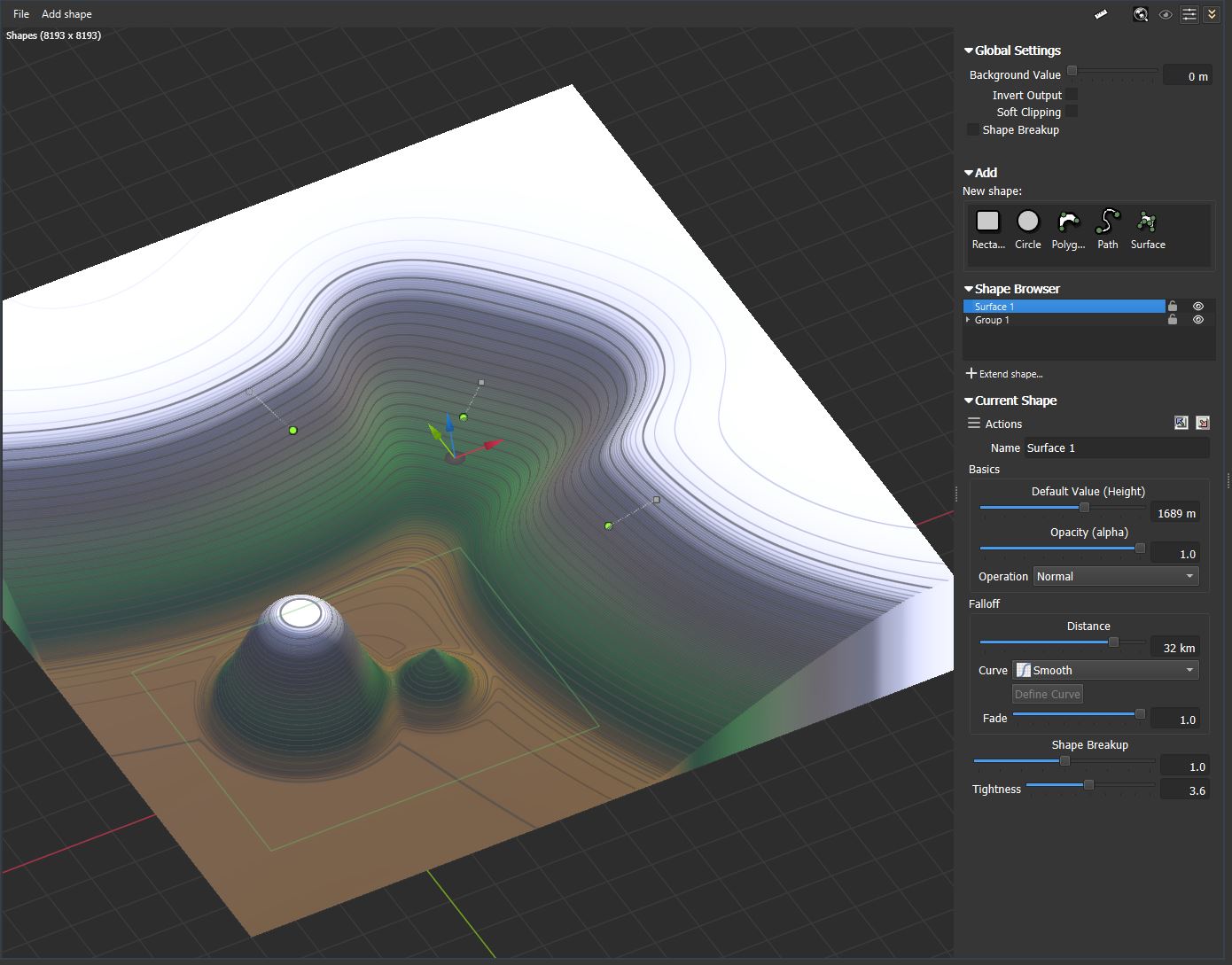
Create Water
Beyond performance boosts, the Create Water device now offers:
- Improved Water-Terrain Boundaries: More natural integration of water and land.
- Selective Water Generation: Ignore small or isolated bodies of water as needed.
GPU Compute Plugins
Introducing the Code device, making it easier than ever to create custom plugins:
- In-App Device Creation: Craft new devices directly within World Machine.
- High Performance: Leverage GPU compute for speed, using Lua as the host language.
- Safe Sharing: Sandboxed execution ensures you can safely use and share plugins with other users.
Note: The Code device is still in early development.
And More…
This was just the highlight reel! For more details, check the full changelog below, or visit the Update Center to upgrade.
Full Changelog
User Experience Changes
General Enhancements
- Unicode Support: Use any language—or even emojis 😎—throughout your project.
- Project Versioning: Easy management of project and device versions. Edit projects from prior editions without compatibility issues. Upgrade all devices with one click or one at a time.
- Starred Changesets: Preserve specific favorite project changesets in history, even across saves and loads.
- The project now shows you the last edit that you saved and marks it with a disk icon, making it easier to see which changes have not yet been saved.
- History Navigation: Use mouse buttons or
Alt + Left/Rightto navigate through your project history. - Stop/Preview Button: Quickly halt builds or enter preview mode from the status bar.
- Memory Usage Options: Access additional memory settings by clicking the status spinner.
- Added a configuration option to choose what happens when creating a new project (select from: Blank, Example World, or startup.tmd).
Dialog Improvements
- Modernized Dialogs: Updated Project Settings, Macro, and Device settings dialogs for a cleaner look.
- Right-Side Parameter Pane: Edit device parameters conveniently on the side.
- New Color Picker: Enjoy a sleeker color selection tool. Includes a new eyedropper has been added to the color selector widget. Now you can click any color anywhere on your screen to select it—this feature was highly requested!
- Easy Access Features: Quickly toggle features such as display masks or spatial types directly from the parameter pane.
- Dismissable or Pinned Dialogs: Click outside to dismiss dialogs or pin them to keep them open.
- Scrollable, Collapsible Panels: Keep your workspace organized with adjustable panels.
- Spatial Parameter Controls: Use “Control with…” menus to quickly add and link devices.
- Filterable library: Added search options and filtering to the library dialog to make it easier to find the macros and devices you’re looking for.
Viewport Enhancements
- New Display Guides:
- Slope Overlay: View areas of high slope, very useful as a guide to getting elevations correct.
- Terrain Grid Overlay: Overlay the pixel-level datagrid on the terrain
- Enhanced Topographic Lines
- Customizable Visuals: Adjust water colors, topographic line features.
- Improved Navigation: Use left and right mouse buttons together to emulate middle-button panning.
- Camera Slots: Save and recall up to eight camera positions using keys 1–8.
- Adjustable Field of View: Fine-tune the camera’s perspective.
- Distortion Visualizer: Visually interpret distortion data types.
- Performance Boosts: Faster device switching in viewports.
- Viewport shortcuts: Arrow keys and the “+”/“–” keys can now be used to navigate within both the 3D view and the workview.
Workview Updates
- Grid Display Improvements: Adaptive grids that fade smoothly.
- Enhanced Device Groups: Auto-expand when repositioning internal devices, and configurable spacing.
- Wire Options: Right-click wires to zoom to connected devices. Wire to existing ports to steal their connections.
- Version and History Overlays: Visual cues show device versions and modifications in the current changeset.
- Shortcut for Renaming Devices: Added new workview shortcut key (“N” ) allows you to quickly rename a device without triggering invalidation.
Project Browser
- Macro Internals Displayed: See the inner workings of macros directly in the device browser.
- Expand/Collapse Groups: Navigate deep device heirarchies more easily.
Build and Framework
Build Engine
- Per-Device Previews: Get faster results as devices preview individually.
- Async Memory Paging: Preserve memory with ahead-of-time result archiving.
- Optimized Packet Memory: High-res performance gains through pre-allocation and caching.
- Build Throttling: Increased stability in low-memory situations.
Tiled Builds
- Recovery and Real-Time Merging: Resume unfinished builds after failures and enjoy incremental tile merging to save time and storage space.
- Now supports upper or lower-left tileset origin
Internal Changes
- Vector Compute Support: CPU-based compute now uses AVX2/SSE for up to 8x better performance.
- Reduced Memory Usage: RGB packets now use float16, cutting memory use by 50%.
- Crash Recovery Improvements: World previewing is disabled until explicitly re-enabled after a crash.
Devices
- Most devices now support spatial parameters, allowing to you vary a setting across the map.
- Macros can now be assigned a permanent typename, ensuring consistency across your projects.
New Devices
Code Device
Introducing the Code device, making it easier than ever to create custom plugins:
- In-App Device Creation: Craft new devices directly within World Machine.
- High Performance: Leverage GPU-based compute for speed while using Lua as the host language.
- Safe Sharing: Sandboxed execution ensures you can safely use and share plugins.
- See the included example files for how-to examples.
- Read the Lua host API docs
Note: The Code device is currently in development preview.
Compare Maps
A handy tool that compares two heightfields and outputs a fuzzy result. A few interesting example uses:
- Select areas where sediment deposition exceeds removal.
- Identify regions where one terrain is lower than another.
- Experiment with combining selector maps.
Control Device
A “remote control” for other devices, letting you set properties typically only adjustable in the UI, like enabling/disabling devices or setting build resolutions. Great for macros!
Report Presence & Report Spatial
Tools for macro creators to manage internal devices based on external inputs.
Macros
- Bedrock&Soil : provides geologically-based colormaps/materials
- Vegetation Layer: grows vegetation based on your soil layer (or any other map you provide). Easily customize the season, colorfulness, (spring, fall, etc) and much more!
- Coastal Layer: provides for undersea and coastal colormaps/materials
- Extra Channels: deepens and intensifies erosion channels for particular types of terrains
- Material utilities: A variety of macros to make it easier to work with materials
Devices with Additional Functionality
Shapes (Generator)
UI Enhancements
- Transform Widgets: Easier positioning of shapes.
- Shape Browser: Support for hierarchical grouping.
- Lock/Hide Shapes: Manage complexity by hiding or locking shapes.
- Reworked Panel: Cleaner interface for shape controls.
- Extend Shapes: Add new vertices to existing paths and polygons.
- Even more Undo/Redo: Robust support even while editing vertices.
New Features
- Group Shapes: Combine many shapes into a single composite. Organize shapes.
- Adjustable Falloff: Customize falloff to be any percentage between fully internal and fully external.
- Independent Vertex Heights: Interpolating surfaces for box and polygon shapes.
- Enhanced Paths: Bezier and auto-smooth modes with adjustable quality.
- Advanced Compositing: Selectible modes like Behind, Within Existing, Intersect, Add, Subtract, and more.
- Interpolating Surface Shape: A new shape type for sculpting smooth surfaces.
- Shape Conversion: Switch between path and polygon shapes.
- Split Paths: Divide paths at a specific vertex.
Tiled File Input (Generator)
- New Dialog UI
- One-Click Import: Automatically detect and import tileset from a single example file.
- Now supports upper left/bottom left tileset origin
Blur (Filter)
- Spatially-Varying Radius: Allow for spatially varying blur amount in addition to masking.
Create Water (Nature)
- Performance: Major speed improvement, particularly at high resolution.
- Selective Water Inclusion: Option to ignore small or isolated lakes.
- Water channel Improvements: Better geometry between water and terrain.
- Better geometry: Adjust water depth and entrenchment in steep areas for more realistic water paths.
- Added the ability to exaggerate depth and disable scaling of channel heads to zero, enabling special effects like canyon creation. A new example world (“Sweet Canyon”) demonstrating this feature is included.
- Toggle lake and river generation.
- Ability to do basic flow restructure when ignoring lake areas
Flow Restructure (Nature)
- Performance: Major speed improvement, particularly at high resolution.
- Improved basin quality and control over basin slope
- (Sorry, but ridge-breaking is temporarily removed in this release 🙁 )
Erosion (Nature)
- Feature Size Control: Directly control the maximum affected feature size for precise results.
- Soil Control: Model the landform evolution of soil from an initial distribution.
- Spatial Parameters: Every parameter can now be controlled by a map, giving you unparalleled tuning power.
- Repeatable output: Erosion output now matches between builds, eliminating a common frustration.
- And many additional enhancements…
Thermal Weathering (Nature)
- Stronger Influence: Talus deposition can now completely bury vulnerable ridgelines, enhancing the realism of weathered landscapes.
- Mass Balance Option: The return of this popular feature lets you choose to either break down bedrock or add talus material, giving you more control over terrain evolution.
- Enhanced Structure: Introduce crack-like rock textures to weathered areas for added detail and visual interest.
- Simulate Talus Movement: Switch to mass-movement-only mode to treat the entire input as granular material.
- Performance Boost: Enjoy faster build times.
Compare Maps (Selector)
(New!) Compares two input maps, and returns the fuzzy result of that comparison. Surprisingly useful for creating novel and interesting patterns
Colorizer (Material)
- Duplicate Gradient Keys: Hold any modifier key while dragging to duplicate.
- Contrast Adjustment: Tighten transitions between colors.
Chooser (Combiner)
- Introduced bias control for easier mix adjustments
- If no control input provided, defaults to constant mix, allowing for quicker simple blending.
- Hides parameters that are not applicable to the chosen mode
Multi Chooser (Combiner)
- An equal-area mode has been added to ensure that inputs are spaced so that they are equally represented in the output, rather than being spread as far apart as possible.
- A cyclical mode has been added so that the control input loops smoothly from the highest back to the lowest value. This is especially useful for features like the “Seasonality” slider in the new Vegetation Layer macro.
Clamp Device (Filter)
- Added control over the soft clipping range.
- Adjusted what happens with clamp range of zero to produce more intuitive results.
Instance Scattering (Material)
- Aspect Ratio: Maintains the input’s aspect ratio.
- Heading: Added Heading parameter for direct control over instance rotation.
- Additional Compositing Operators: More ways to blend instances (Over, Under, Add, Max).
- Mirroring Variations: Mirror instances for more variation.
- Place at elevation: Regular-blend the instance to the terrain surface
- Center-Z Adjustment: Fine-tune positioning.
- Explicit control over premultiplied alpha condition
- Added Elevation scale variation, and Elevation fractal persistence.
- Changed the offset between fractal layers for better coverage.
- Performance Improvements
Instance Tiling (Material)
- Aspect Ratio: Maintains the input’s aspect ratio.
- Mirroring Variations: Mirror instances for more variation.
- Performance Improvements
Compare Numbers (Parameter)
- Expanded Comparisons: Perform a variety of comparisons beyond equality.
Scalar Generator (Parameter)
- Enhanced Functionality: Create scalar or distance parameters.
- Range Control: Define the range of the output number.
- Randomize: Generate random values with a click.
Report Presence (Parameter)
Output a boolean value depending on if an input packet is present or not.
Report Spatial (Parameter)
Control the resolution and coordinate space of any generator to match an input packet
Macro Enhancements (Utility)
- Mask and Placement Inputs: Macros support the general mask/placement input to match regular devices.
- The internal parameter setup device now lets you adjust the parameter values, not just create them.
Remote Control Device (Utility)
- Device Management: Control properties of other devices remotely.
Devices with improved performance
Significant specific optimizations have been made to these devices:
- Generators: Advanced Perlin, Basic Perlin, Radial Gradient, Color, Constant, Shapes.
- Combiners: Combiner, Chooser, Layers.
- Filters: Bias/Gain, Blur, Clamp, Equalizer, Ramp, Terrace.
- Nature: Create Water, Flow Restructure, Erosion, Thermal Weathering.
- Selectors: Select Height, Select Slope, Select Wetness.
- Material: Ambient Occlusion, Bake Lighting, Instance Scattering, Instance Tiling, Meshify.
- Miscellaneous: Report Height, Report Color.
Bugfixes
Hundreds of bugs have been fixed, some of them of quite a vintage!
We hope you enjoy exploring all the new features and enhancements in ‘Hurricane Ridge’. Happy terrain building!
